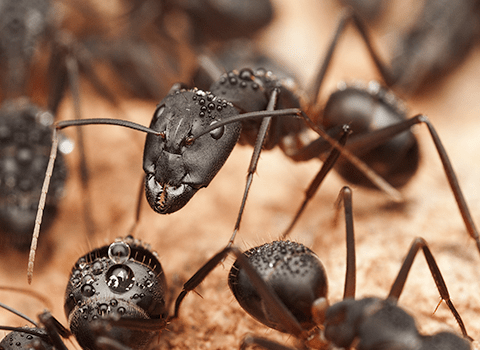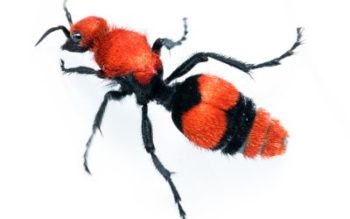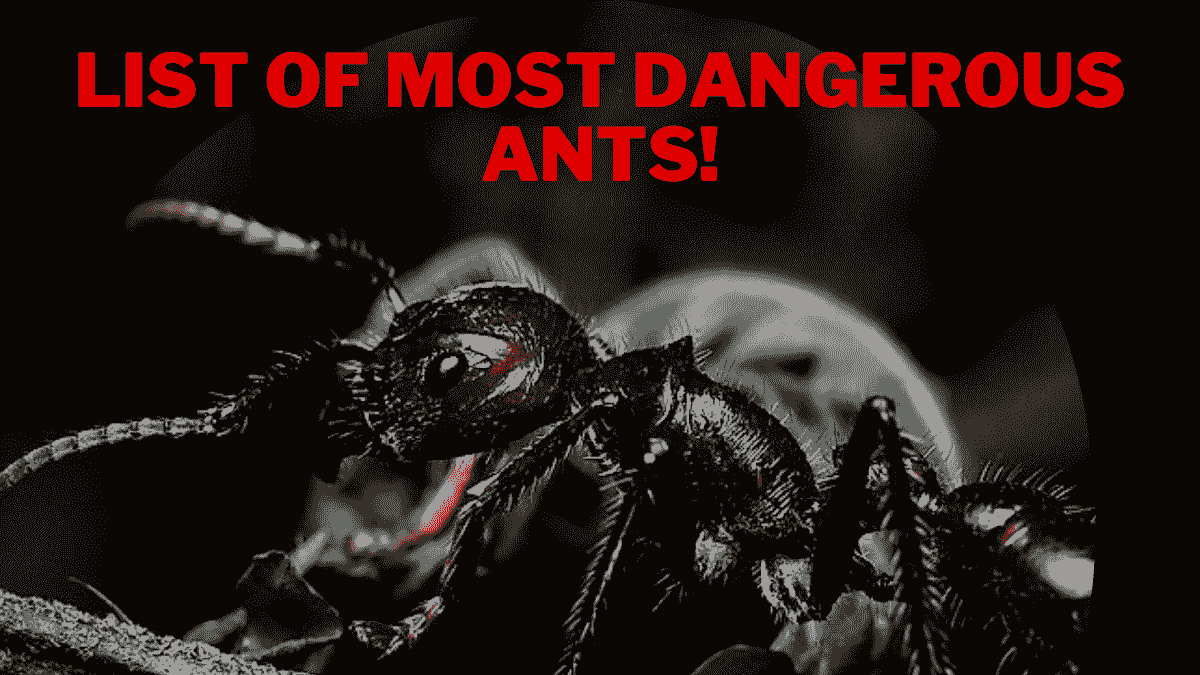The Bullet Ant is known to be one of the most dangerous ants in the world due to its potent sting. This ant species has a powerful venom that can cause excruciating pain and potential allergic reactions, making them a serious threat to humans.
Ants are tiny creatures that can pack a powerful punch, especially when it comes to the infamous Bullet Ant. With its formidable sting, this ant species has earned a fearsome reputation for its ability to inflict intense pain. We will delve into the world of dangerous ants, exploring what makes the Bullet Ant stand out among its peers.
Understanding the dangers posed by these tiny insects can help us better appreciate the complexities of the natural world and the importance of respecting all creatures, no matter their size. Let’s uncover the secrets of the most menacing ant species and learn how to stay safe in their presence.
The Most Dangerous Ant Species
When it comes to ants, many people think of them as harmless pests. However, there are certain ant species that can actually pose a threat to humans and animals. In this article, we will discuss the most dangerous ant species, the venomous ant species, and the harmful effects of ant bites.
Some ant species have venom that they can inject into their prey or enemies. The venom is usually delivered through a sting, and it can cause different reactions depending on the species. Here are a few examples of venomous ants:
- Fire Ants: Fire ants are notorious for their painful sting. They are reddish-brown ants that build large nests and aggressively defend their territory. Their sting can cause allergic reactions in sensitive individuals.
- Bullet Ants: Bullet ants are known to have the most painful sting among all ants. Found in Central and South America, their sting is said to feel like a gunshot, hence their name. The pain can last for up to 24 hours.
- Harvester Ants: Harvester ants have a venomous sting that they use to capture their prey. Their sting can cause a burning sensation and lead to swelling.
While not all ant bites are dangerous, some can have harmful effects on humans and animals. The effects can vary depending on the individual’s sensitivity, the species of ant, and the number of bites received. Here are a few potential harmful effects of ant bites:
- Allergic Reactions: Some individuals may be allergic to ant venom and experience severe reactions after being bitten. These reactions can include difficulty breathing, swelling of the face or throat, and even anaphylaxis, a severe and life-threatening allergic reaction.
- Secondary Infections: Ant bites can sometimes cause secondary infections if the skin is broken and bacteria enter the wound. This can result in redness, swelling, and the formation of pus.
- Pain and Discomfort: Many ant bites can cause pain, itching, and discomfort. Some species, like the fire ant, can leave painful welts on the skin.
It is important to recognize the potentially dangerous ant species and take precautions to avoid being bitten. By understanding the risks associated with ant bites, we can better protect ourselves and our loved ones from their harmful effects.

Credit: www.youtube.com
Identifying Dangerous Ants
Discovering which ants are dangerous is crucial for safety. Certain species like fire ants and bullet ants possess potent stings or bites that can cause severe reactions. Identifying these harmful ants is essential in order to avoid potential health risks.
Physical Characteristics
Color: Dangerous ants are often brightly colored like red or black.
Size: They tend to be larger in size compared to harmless ants.
Mandibles: Look out for ants with sharp and prominent mandibles.
Behavioral Traits
Aggressiveness: Dangerous ants exhibit aggressive behavior when disturbed.
Nesting Habits: They build nests in close proximity to human dwellings.
Swarming: These ants are known to swarm in large numbers when threatened.
Venomous Ant Species
When it comes to venomous ant species, it’s essential to be aware of the potential dangers they pose. Two particular types of ants stand out due to their venomous nature: Fire Ants and Bullet Ants.
Fire Ants
Fire ants are notorious for their painful sting and aggressive behavior.
Bullet Ants
Bullet ants have one of the most painful insect stings in the world.
Harmful Effects Of Ant Bites
Ant bites may seem like minor inconveniences, but they can actually have harmful effects on humans. These tiny creatures, known for their incredible strength and organization, can leave behind a painful sting and cause various allergic reactions.
Painful Bites
Ant bites can be downright painful, often leaving behind redness, swelling, and a sharp burning sensation. The pain can vary according to the type of ant responsible for the bite, with some bites feeling like a mere prick and others causing intense discomfort. Fire ants, for example, are notorious for their painful bites that leave behind itchy, pus-filled blisters.
Did you know?
- Some ant bites can feel similar to a bee or wasp sting, causing immediate sharp pain.
- For those with low pain tolerance, even mild ant bites can cause significant discomfort.
Allergic Reactions
While most ant bites result in local reactions, such as pain and redness, some individuals may experience allergic reactions. These reactions occur when a person’s immune system overreacts to ant venom, causing symptoms beyond the usual pain and swelling.
Allergic reactions to ant venom can range from mild to severe, with symptoms including:
- Hives or rash on the skin surrounding the bite
- Itching or flushing in other parts of the body
- Swelling in the face, lips, tongue, or throat
- Dizziness or lightheadedness
- Difficulty breathing
Tip:
- If you experience severe allergic reactions from any insect bite, seek immediate medical attention.
It’s important to be aware of the harmful effects ant bites can have. Understanding the potential pain and allergic reactions caused by these tiny creatures can help us take appropriate precautions and seek proper treatment, ensuring a safer and more enjoyable outdoor experience.
Protecting Yourself From Dangerous Ants
Preventive Measures
When spending time outdoors, it’s essential to take precautions to avoid encounters with dangerous ants. Follow these preventive measures to protect yourself:
- Keep food and garbage properly sealed to avoid attracting ants.
- Wear protective footwear and clothing when in areas known for dangerous ant species.
- Regularly inspect and seal any entry points in your home to prevent ant infestations.
- Be aware of your surroundings and avoid disturbing ant nests or colonies.
Treatment For Ant Bites
If you do suffer an ant bite, it’s crucial to know how to properly treat it. Here are some steps to follow:
- Wash the affected area with soap and water to reduce the risk of infection.
- Apply a cold compress to alleviate swelling and pain caused by the ant bite.
- Use over-the-counter antihistamine creams or oral antihistamines to relieve itching and discomfort.
- If symptoms persist or worsen, seek medical attention promptly.
Managing Ant Infestations
Ant infestations can be a nuisance and, in some cases, even dangerous to both human health and property. Therefore, managing ant infestations is crucial to maintain a safe and hygienic living or working environment. This article will discuss effective methods for controlling ant infestations, including natural control methods and professional pest control.
Natural Control Methods
In many cases, natural control methods are the first line of defense against ant infestations. Regular cleaning and maintenance of indoor and outdoor spaces can help deter ants from establishing colonies. Sealing cracks and blocking entry points can also prevent ant incursions.
- Regular cleaning and maintenance
- Sealing cracks and blocking entry points
- Using ant-repelling substances like peppermint oil or vinegar
- Adopting diatomaceous earth for long-term ant control
Professional Pest Control
When ant infestations become severe or persistent, seeking professional pest control services may be necessary. Experienced pest control professionals can accurately identify ant species and implement targeted treatment plans to eliminate infestations while minimizing environmental impact. Using top-grade insecticides and advanced baiting techniques are some key strategies employed in professional pest control for effective ant management.
Educational Awareness About Ants
Ants are fascinating creatures that can be found all over the world, from the tiniest corners of our gardens to the vast wilderness. While some ants are harmless and even beneficial, there are certain species that can pose a danger to our safety. It is crucial to have educational awareness about ants to ensure public safety, especially when it comes to understanding which ants are dangerous.
Information For Public Safety
When it comes to public safety, it is important to be aware of the dangerous ant species and their behavior. Some of the most common dangerous ants include:
| Ant Species | Dangerous Characteristics |
|---|---|
| Bullet Ant | Delivers one of the most painful stings of any insect. |
| Fire Ant | Inflicts painful stings and can cause severe allergic reactions. |
| Harvester Ant | Known for their aggressive nature and painful stings. |
These ants should be treated with caution, and individuals must be educated about their behavior to avoid any potential harm.
Teaching Children About Safety Around Ants
It is crucial to teach children about safety around ants from a young age. By providing them with the necessary knowledge, we can help prevent accidents and stings. Here are a few important points to teach children regarding ant safety:
- Avoid disturbing ant nests or mounds.
- Do not try to handle ants without adult supervision.
- Wear closed shoes and long pants when playing in grassy areas.
- Do not provoke or bother ants intentionally.
- Seek medical help if stung by a known dangerous ant species.
By instilling these safety measures, we can ensure that children are aware of the potential risks associated with ants and know how to protect themselves.

Credit: www.thomaspestservices.com
Conclusion And Recap
Ants can be a nuisance, but some species are more dangerous than others. This article provides a conclusion and recap of the discussion on which ants pose a significant threat to humans and how to identify them. Find out which ants to watch out for!
Understanding The Risks
“`In our exploration of dangerous ants, we’ve discovered the varying risks they pose. From painful bites to potentially life-threatening stings, it’s essential to understand the dangers these tiny creatures present.“`htmlTaking Precautions
“`Protecting oneself from these risks involves implementing smart preventative measures. By being aware of the dangers posed by different ant species, you can take steps to safeguard yourself and your surroundings.“`html“`In conclusion, it is crucial to comprehend the risks associated with various ant types. By taking precautions and staying vigilant, you can reduce the likelihood of any harmful encounters. Remember, prevention is key when it comes to dealing with dangerous ants.
Credit: southernpestcontrol.biz
Frequently Asked Questions For Which Ant Is Dangerous
What Are The Most Dangerous Ant Species?
The most dangerous ant species include the bullet ant, fire ant, and bulldog ant. These ants have potent venom and aggressive behavior, making them a threat to humans and animals.
How Do I Identify A Dangerous Ant?
Identify dangerous ants by their vibrant colors, aggressive behavior, and painful stings or bites. Taking note of their size, shape, and habitat can also help differentiate dangerous species from non-threatening ones.
What Should I Do If Bitten By A Dangerous Ant?
If bitten by a dangerous ant, clean the affected area with soap and water, apply a cold compress to reduce swelling, and seek medical attention if experiencing severe reactions or allergic symptoms.
Can Dangerous Ants Cause Serious Harm?
Yes, dangerous ants can cause serious harm through their venomous stings or bites. Some species’ venom can trigger allergic reactions, leading to severe health issues if not promptly treated.
Conclusion
Overall, it is crucial to be aware of the potential danger posed by certain types of ants. Understanding the characteristics and behavior of different species can help you identify the dangerous ones and take appropriate precautions. Whether it’s the venomous fire ant or the destructive carpenter ant, knowledge is power when it comes to dealing with these tiny but formidable creatures.
Stay informed, stay safe.

I’m MD Tanvir, and I bring years of expertise gained from working closely with pest control companies to the forefront. My journey in the industry has inspired me to launch Bug Battler, a platform aimed at equipping people with the know-how to combat pests autonomously. Through Bug Battler, I aim to empower individuals with practical insights to tackle pest infestations effectively.

